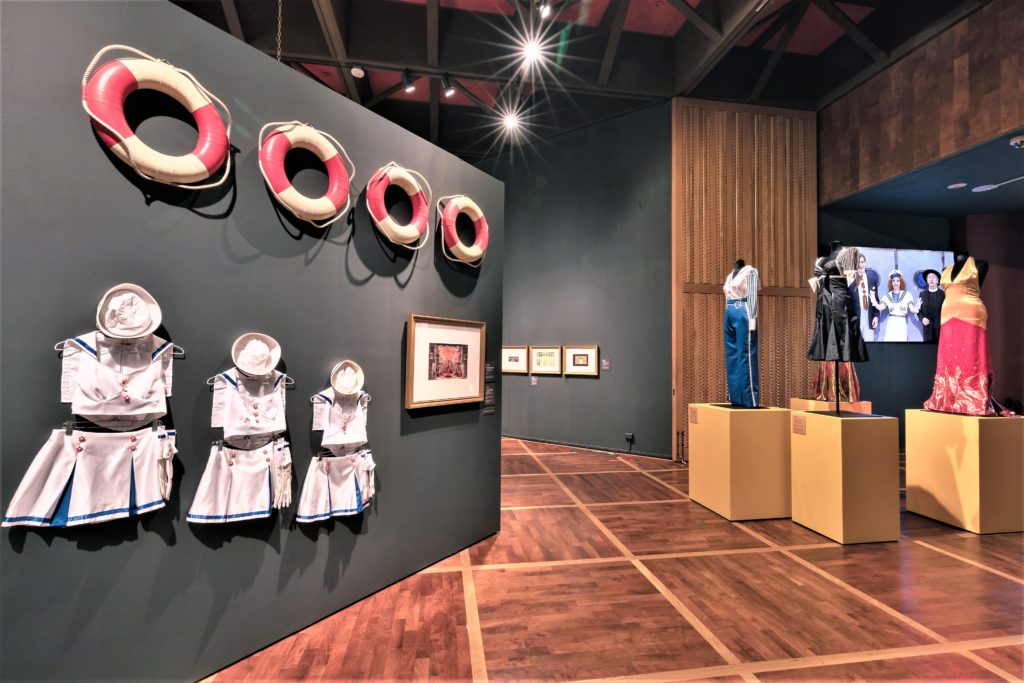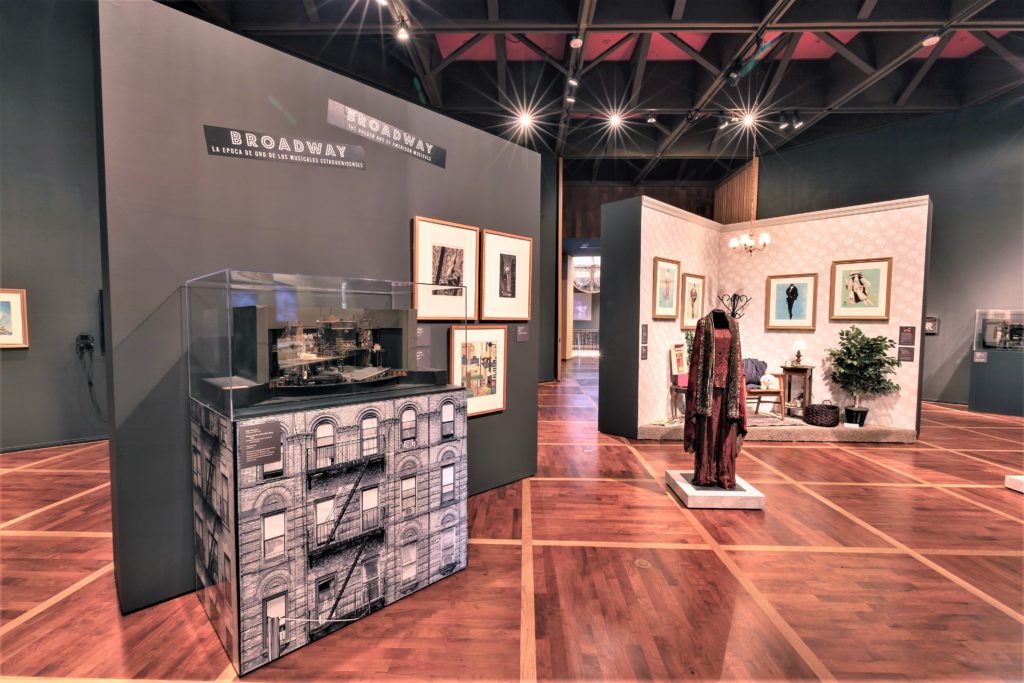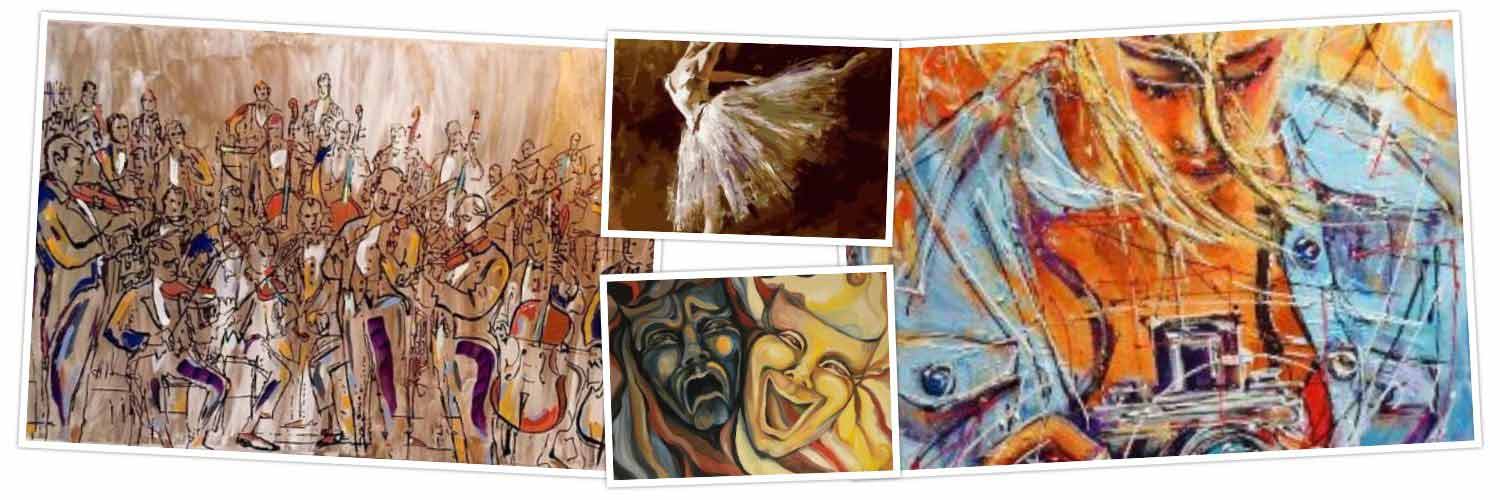“America on Stage” Showcases Theater Design
By JASMINA WELLINGHOFF, Editor –
There is an old adage that says that theater is “two planks and a passion” and there is a lot of truth in that. But the planks – and the passion – are usually greatly helped by the skills and artistry of designers who create sets, costumes and lighting to enhance the authenticity and power of the story told on stage.

The work of these theater artists is effectively showcased in the McNay Art Museum’s current exhibit “America on Stage,” which will be on view until June 30. Mostly drawn from the McNay’s extensive Tobin Collection of Theater Arts, the exhibit is a brain child of René Barilleaux, head of curatorial affairs, and Timothy Retzloff, the Tobin Theater Arts Fund curatorial assistant.

“Renée suggested that I try to organize the artwork in groups, and I quickly saw four distinct areas, which became our themes,” said Retzloff during an interview in the museum’s library where the show is housed. “The four themes are Broadway – the Golden Age, Nostalgia, Breaking Tradition and Social Justice, as told in musicals, ballet and opera.”
Covering the 20th and 21st century design, the show features, drawings, paintings, story boards, 3-D maquettes, video and sound/music, starting with the 1915 production of “Ziegfeld Follies” to Clint Ramos’ costumes for the recent “Once On This Island” revival which won the 2018 Tony for best revival of a musical. In between, all the famous shows are represented, including “Oklahoma,” “Annie Get Your Gun,” “South Pacific,” “Anything Goes,” “West Side Story,” “Grease,” “Ain’t Misbehavin,’” “Fiddler on the Roof,” “Spring Awakening,” “Cabaret” “Hair” and more. One of the represented musicals, “In the Heights” – Lin-Manuel Miranda’s first stage hit – just closed a successful run at the Woodlawn Theater.
Though designs for New York productions make the bulk of the exhibit, local and area artists are present, too, such as actual 3-D costumes created by Trinity University professor/designer Jodi Karjala for a production of “Anything Goes.” and the work of Texas State University’s Dan Hannon for a production of “Cabaret.”
While the examples for the Golden Age of Broadway are pretty obvious, the Nostalgia category is less sharply defined. “These are basically productions that look back at shows from earlier times and idealize them,” said Retzloff. “No, No Nanette” and “You are a Good man Charlie Brown” revivals are in this group, as well as “The Drowsy Chaperone,” an original recent show which can be seen as both parody and homage to old-style musicals.
In the Breaking Tradition category, three operas – Copland’s “Rodeo,” “Nixon in China” and “Porgy and Bess” are good examples. The “Rodeo” artwork is particularly striking as it introduced Western American themes and images, never before seen in opera. “Porgy and Bess” broke new ground in its own way by focusing on the experience and music of African-Americans, while “Nixon” was primarily included due to its “minimalist” score by John Adams, which, however, included a mixture of styles, including jazz and big-band.
The shows grouped under Social Justice are “Fiddler on the Roof,” “Hair,” “Cabaret” and “Spring Awakening.”
Right in the center of the exhibit the curators positioned a large niche with set pieces reminiscent of “The Drowsy Chaperone” that you can walk into and sit in a chair to pose as Man in Chair, the narrator of “Chaperone.” Other highlights include 3-D maquettes of sets for “West Side Story,” “In the Heights,” “You’re a Good Man, Charlie Brown,” “Cabaret,” “A funny Thing Happened on the Way to the Forum,” and other shows.
What this exhibition does is separate the art of design from stage action to allow it to shine in its own right as a unique visual arts form. It’s educational and fun, and a must-see for theater fans.
The McNay Art Museum, 6000 N. New Braunfels; www.mcnayart.org
